Roomba Max 705 Combo
Bridging engineering and emotion — shaping how users see, hear, and feel their robot
CLIENT: iRobot
ROLE: Hardware UX & System Experience Designer
Roomba Max 705C is a high-end robotic vacuum and rolling mop developed as part of iRobot’s new product introduction program.
A multi-sensory design system — where hardware, light, sound, and packaging speak one coherent language.
my Role AS A HARDWARE UX DESIGNER
I align human needs and engineering realities — defining how technology communicates through form, light, and sound.

interaction strategy
communicate as one coherent system.
· Linked mechanical, audio, and visual feedback for clear communication.
· Built the foundation for how the robot expresses itself through motion and cues from unboxing to daily use.

interaction strategy
reliable, and human through production.
· Balanced LED timing, audio playback, and power management to maintain UX quality under manufacturing constraints.
· Preserved clarity and emotional tone through iterative tuning, validation, and pilot builds.
· Helped bridge design decisions with engineering practicality, ensuring products shipped on time and true to intent.
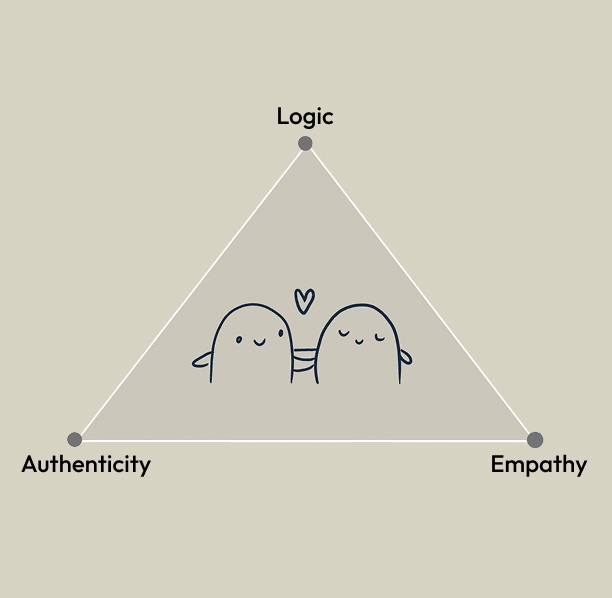
Interaction Language
natural, confident, and purposeful.
· Developed and produced audio cues and verbalizations, then coordinated with localization teams to translate, generate, and audit sound files across all supported languages.
· Packaged and delivered final audio assets to software for integration, ensuring global consistency and playback quality.
· Tuned timing and rhythm to make each interaction feel human and deliberate.
1
kick off & Grid Design Language
Aligned industrial design aesthetics with functional UX principles
“Grid” is the new design language created to unify iRobot’s next-generation products. It defines how geometry, light, sound, materials, and motion communicate coherence across hardware and packaging.

I advocated for a scalable, seamless, purposeful, and intuitive approach — one that feels friendly and accessible — principles I would later deepen and express through the UX hardware design.
Helped shape the foundation of GRID DESIGN, iRobot’s next-generation design language.
Built on the flexible logic of the Grid system, this framework adapts across evolving robot architectures, ensuring every generation remains consistent, intuitive, and beautifully connected.
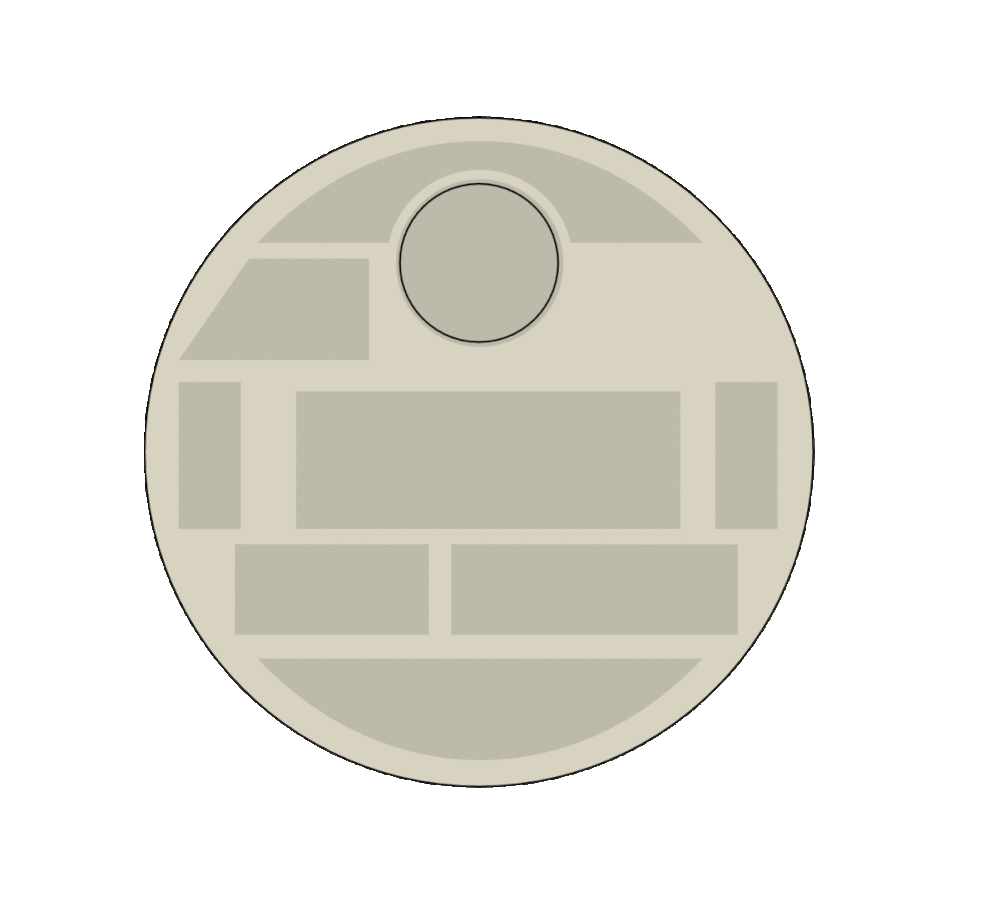
2
Bridged Industrial Design and User Experience
Ensuring every surface, cue, and transition communicates clarity and intent.

Aligned aesthetic intent with usability goals, shaping form and proportions.
Defined how surfaces and touch-points guide interaction visually.
(buttons, latches, textures, arrows )
%201.jpg)
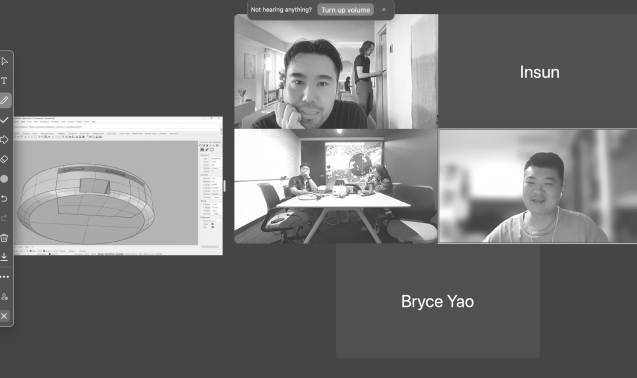
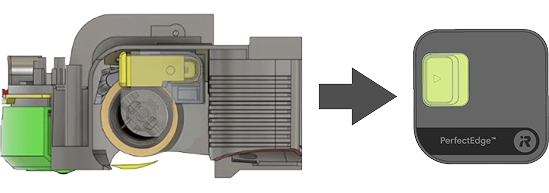


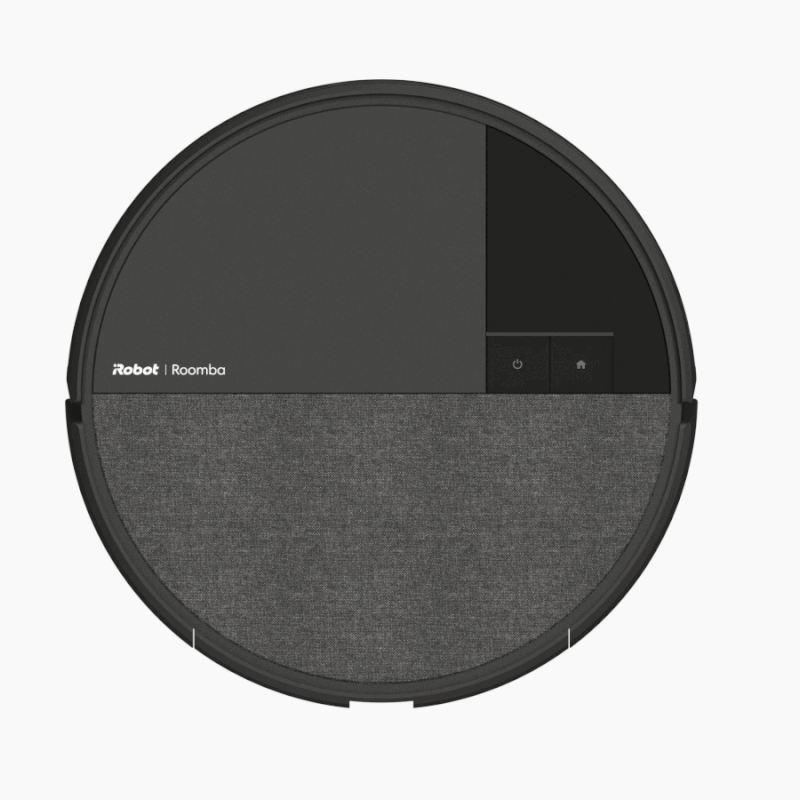
Defined and partnered with ID and Mechanical teams, to integrate lighting and cues early, avoiding late-stage compromises.
3
Interaction Design & Audio Development
Creating a coherent sensory language — where look, sound, and feel speak as one.

button logic and press behaviors across all modes, balancing clarity and discoverability.
chimes, and lighting cues so users can instantly understand the robot’s status.

Developed the audio library and voice feedback system, composing and tuning chimes that balance clarity with empathy.Then pitched the concept to leadership to align vision and gain approval for implementation.
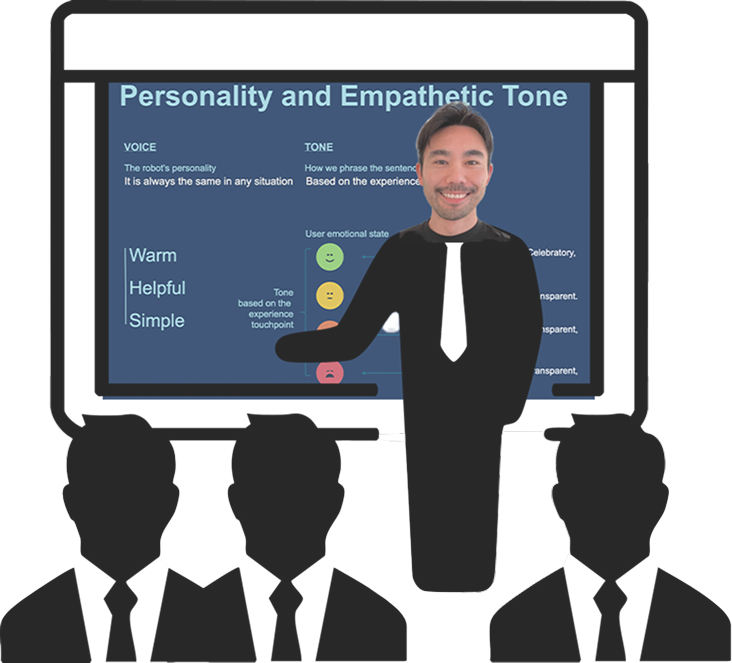
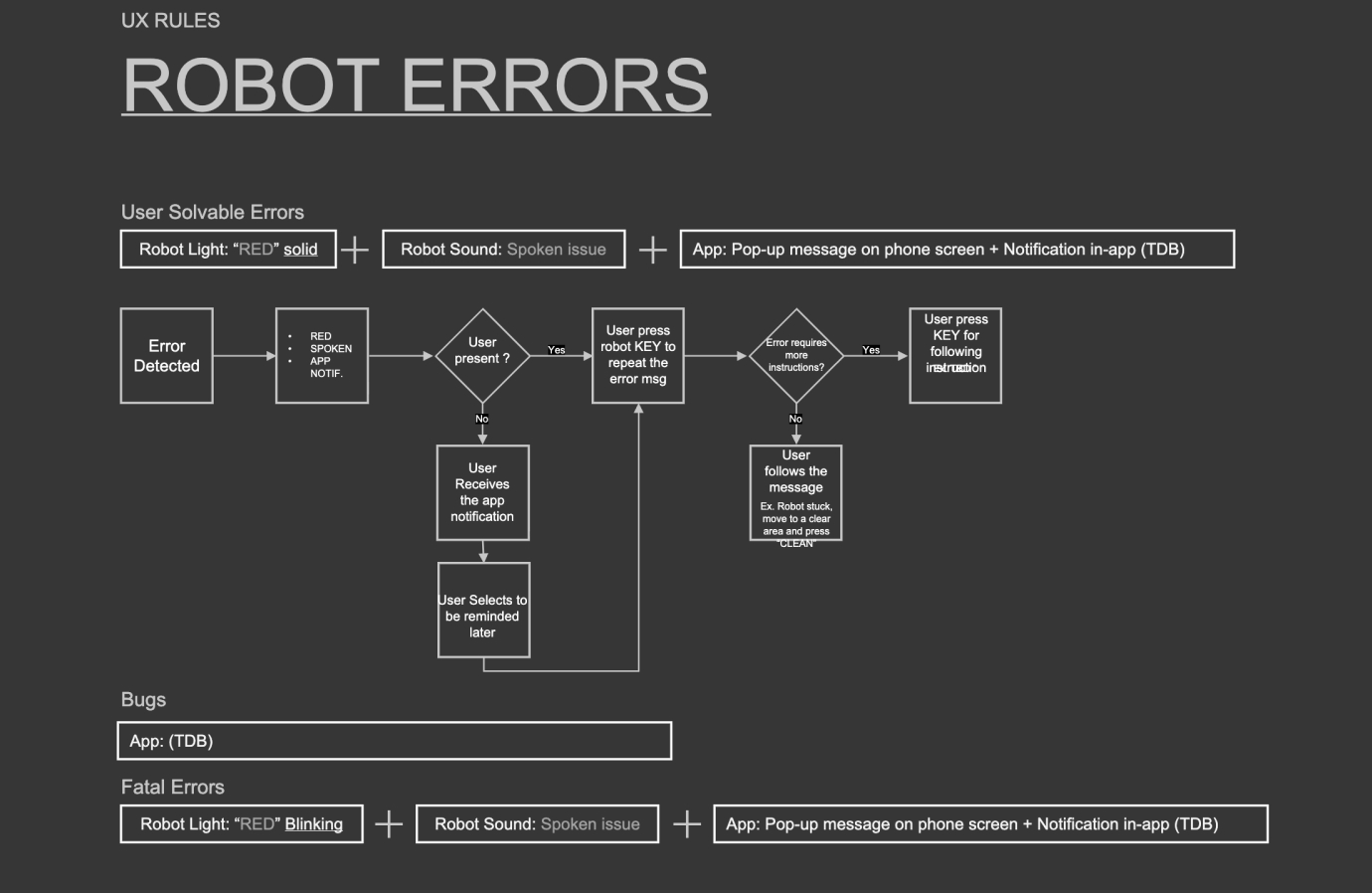
Collaborated with the UX writer to refine the robot’s verbal responses and tone, creating distinct phrasing styles for different scenarios — especially error messages — to keep communication clear, empathetic, and frustration-free.
AI Text to Speech generation:Collaborated with the Localization team to translate and audit all audios in all supported languages, labeled final audio assets for seamless integration by software.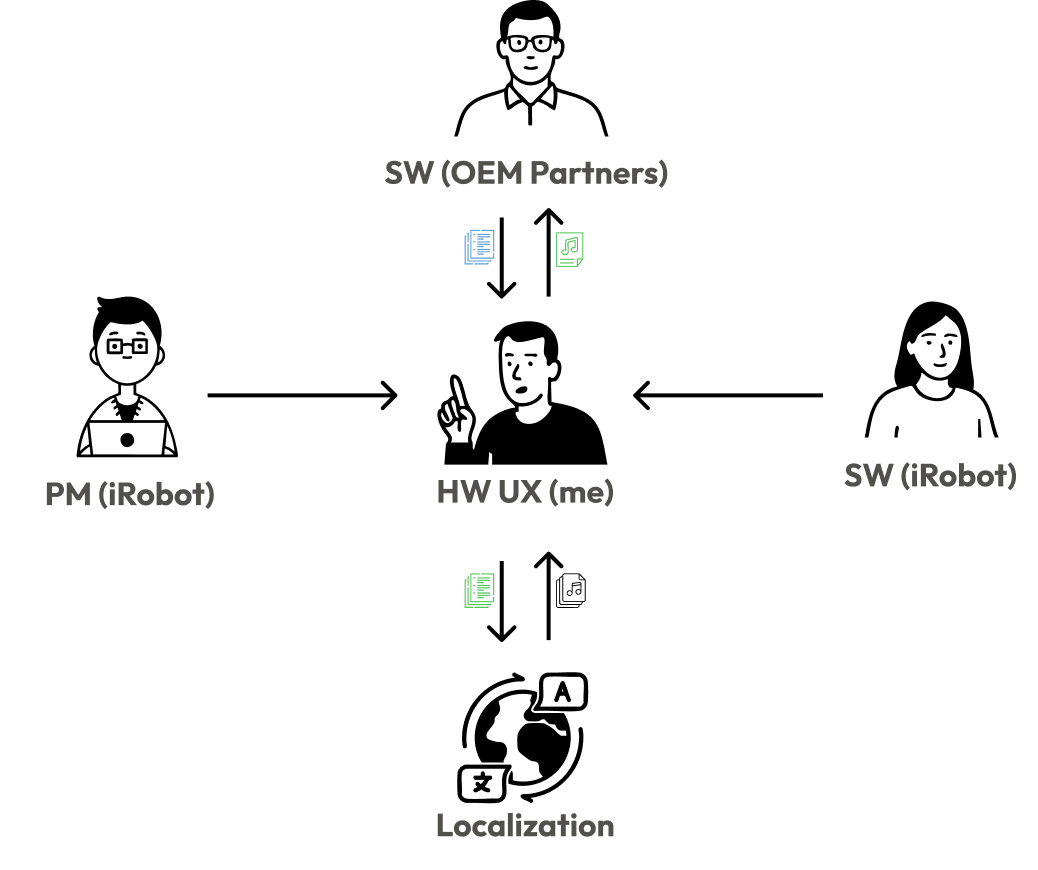
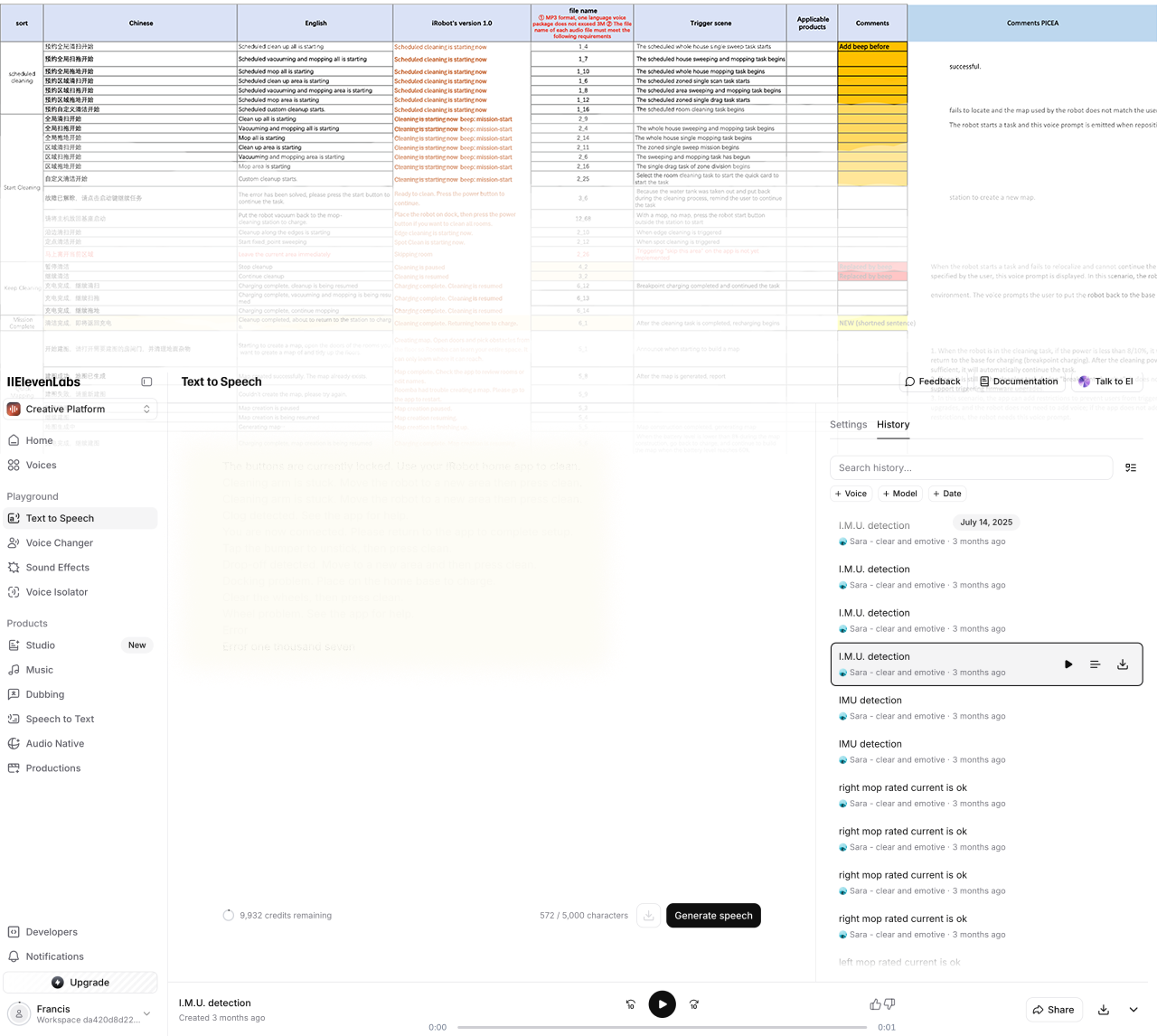
Review prototypes to validate timing, rhythm, and intensity of interactions — refining LED fades and chime pacing to make the robot feel responsive and alive.
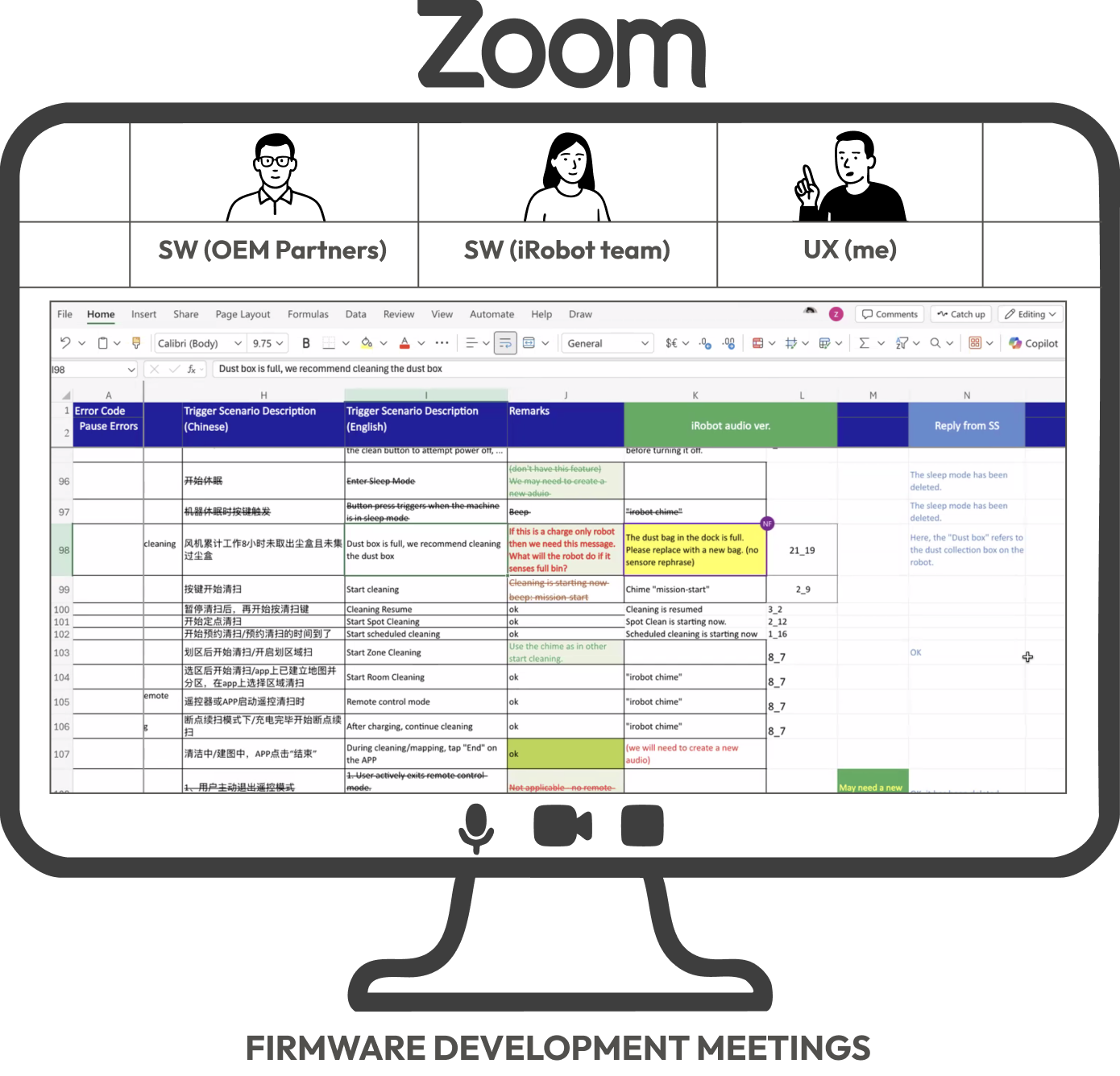
Partnered with engineering and manufacturing teams to ensure audio, lighting, and tactile behaviors preserved design intent through to production.Standardized and tuned audio behavior across platforms,
coordinating with software and hardware teams.4
Prototype & Test
Hands-on research, iterative prototyping, and real-world user testing — connecting user insight with engineering constraints.
Planned and ran user test, both in-office and in-home, observing real behaviors
to uncover friction in everyday use.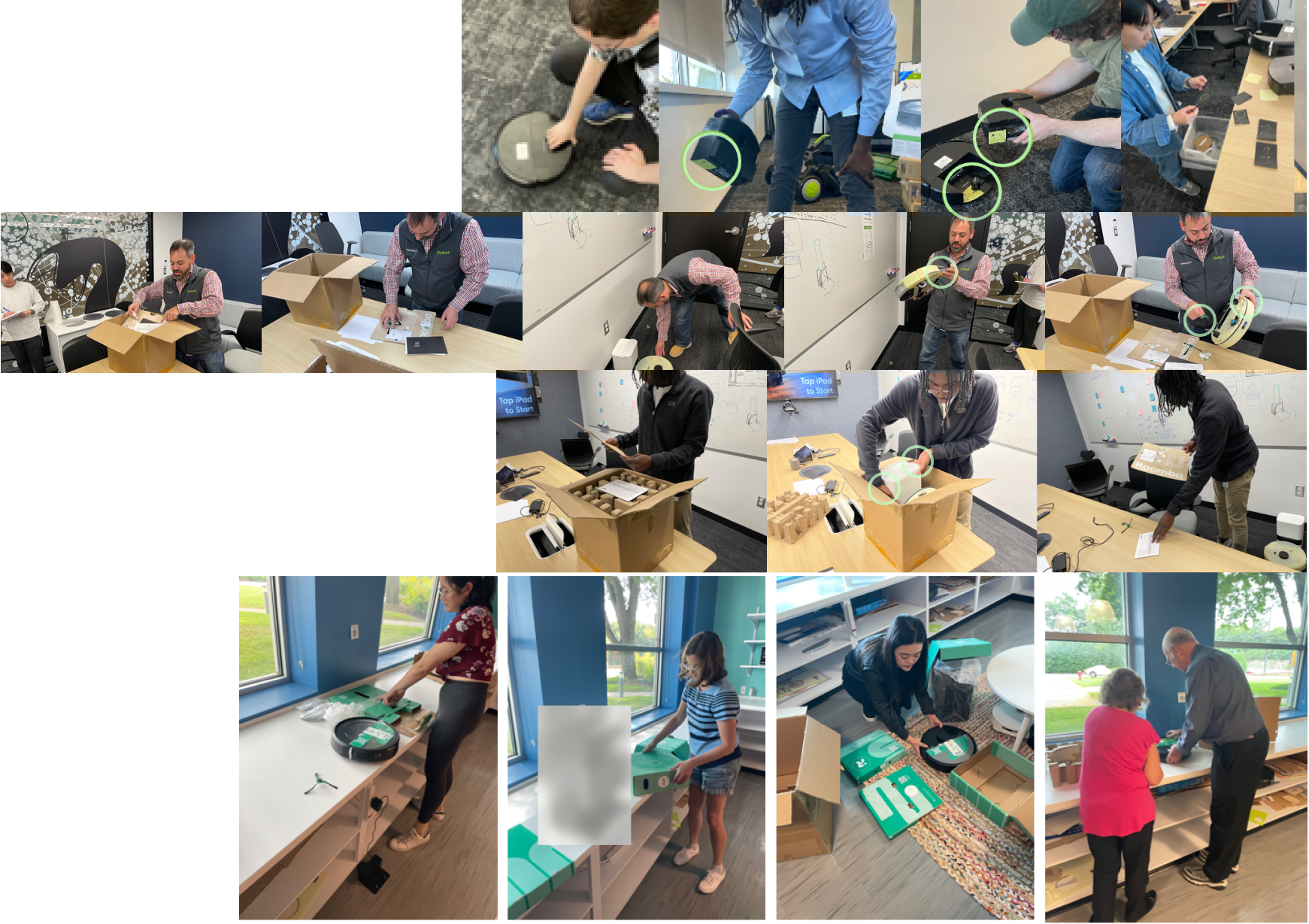

Wizard-of-Oz method (simulate the technology) tests using hidden speakers to evaluate sentences and chimes perception and feedback comprehension.resolved audio distortion issues — led testing, engaged engineers, Product Owner, and OEM to trace the root cause to an electrical power allocation issue and restore audio quality..png)
5
Prototype & Test
Refined structure, graphics, and materials for both usability and cost efficiency.
Collaborated with Packaging Engineers, App Design, Marketing, and Localization teams to bring packaging concepts into production.
Out-of-the-Box Experience
Every step — from opening the box to first mission — designed to feel effortless.

Unboxing Flow — guided users from first touch to setup with minimal steps and clear sequencing.

Clear Touchpoints — used arrows, tabs, and labels so each action felt self-explanatory.


Instructional Artwork — created universal visuals , ensuring instant understanding across languages.
Collaboration with Product Designers & App Design
Holistic Journey — connected packaging, product, and app into one consistent onboarding experience.

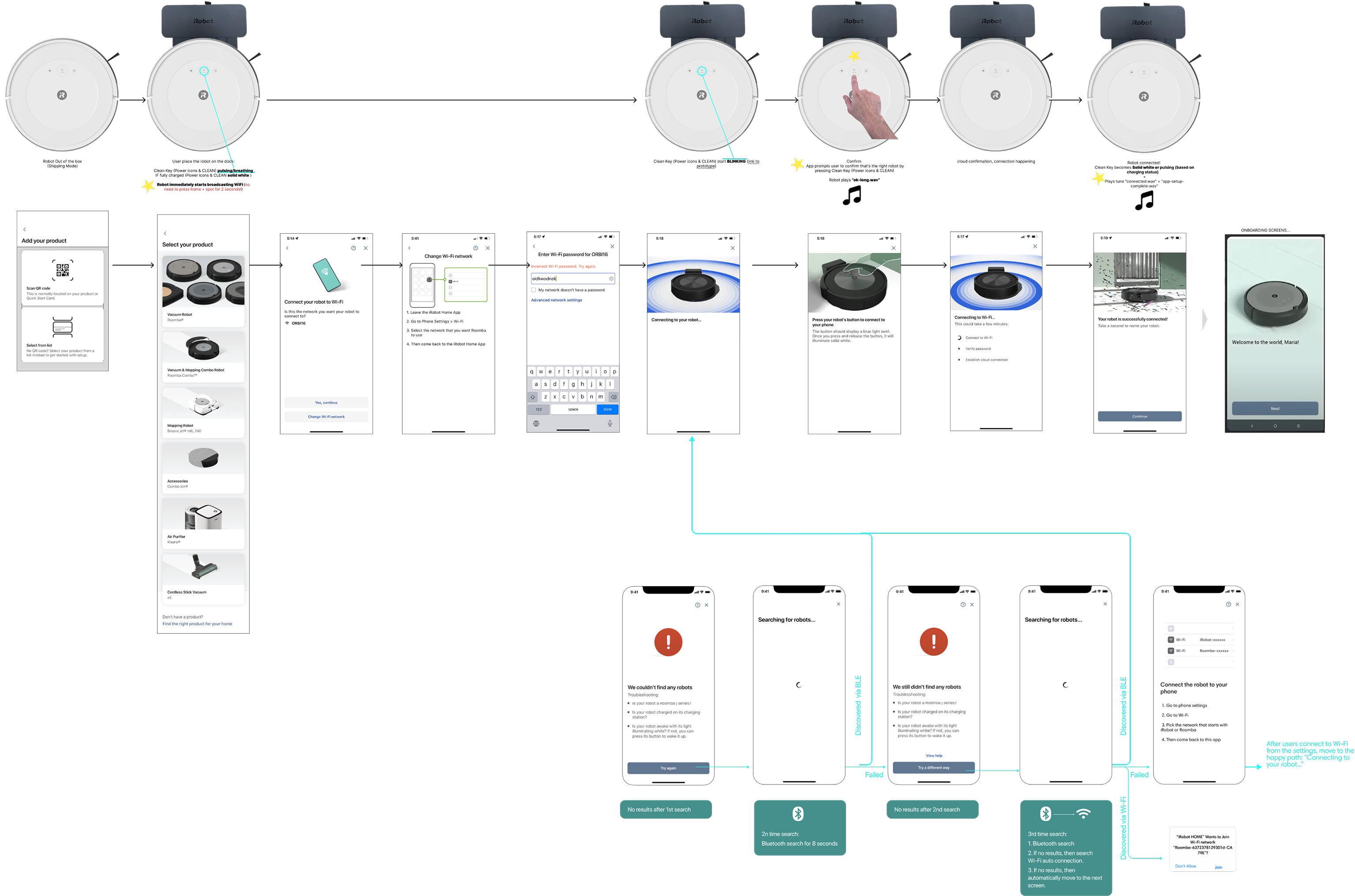
Aligned physical and digital onboarding by working with UX writers and app designers to ensure the in-app experience complemented the unboxing flow.
6
Final Delivery & Launch
Bringing the product to life — ensuring quality, consistency, and a cohesive user experience through launch and beyond.
Supported mass-production readiness, reviewing pilot builds to confirm lights, sounds, and mechanical feedback matched UX intent.
%201.jpg)
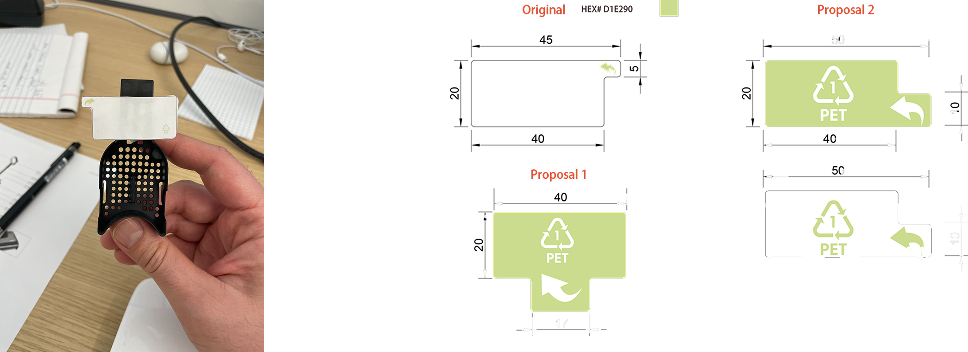
solve last-minute tuning and assembly issues without compromising personality or usability.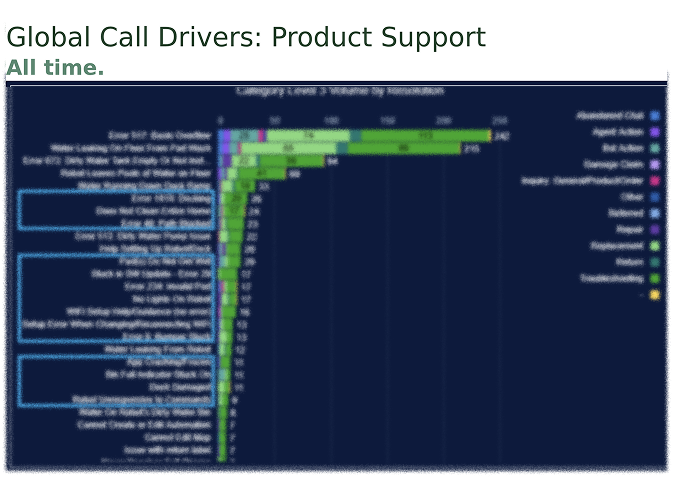
apid UX improvements.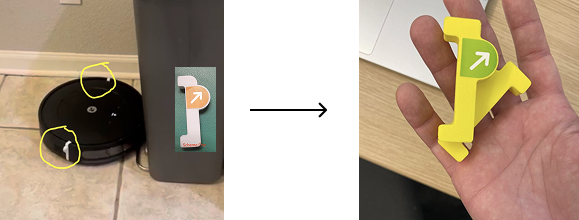
The 705C program strengthened collaboration between iRobot and OEM partners. As Lead UX Hardware Designer, I worked holistically across engineering, marketing, and leadership to advocate for user experience — aligning design intent with business goals and optimizing budgets while delivering a cohesive, high-quality interaction design for a complex product.
From 2023 to 2025
Highlighting every robot I contributed to — from concept to production — as part of the continuous refinement of hardware UX.
.png)